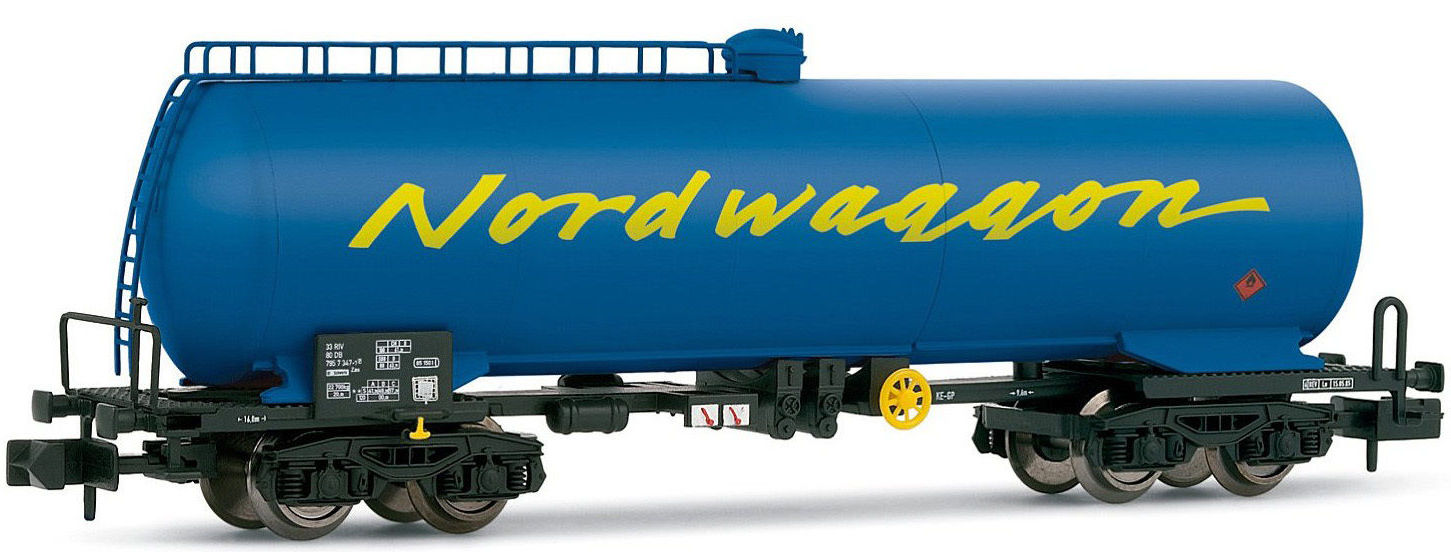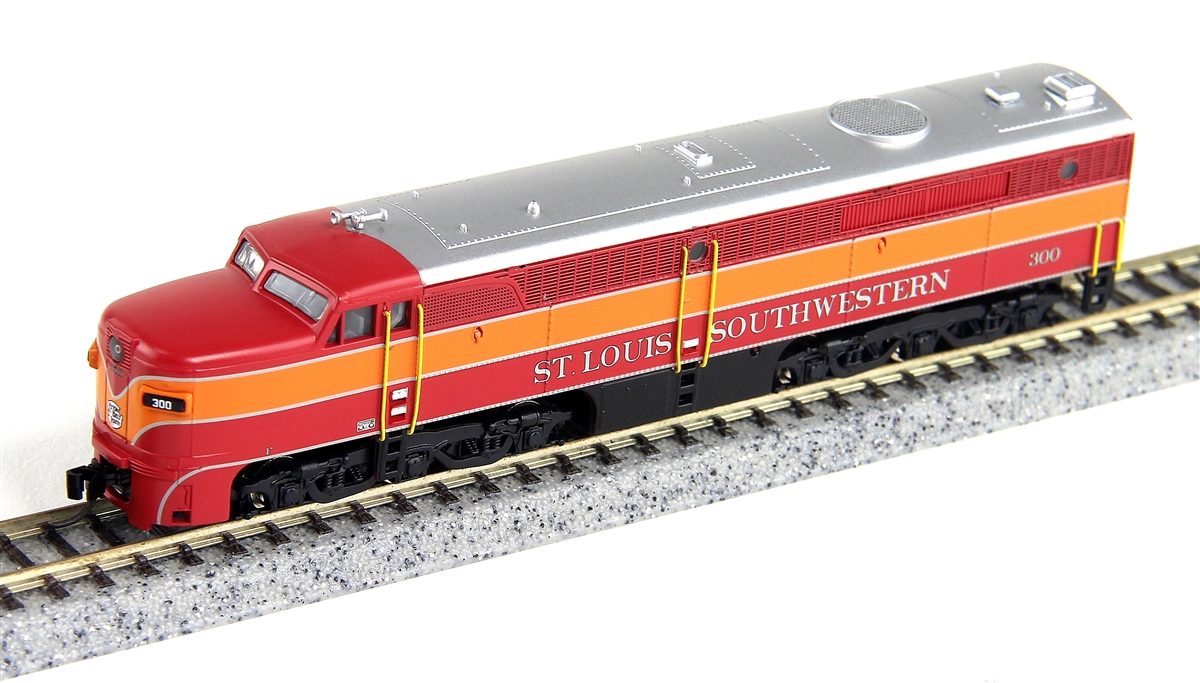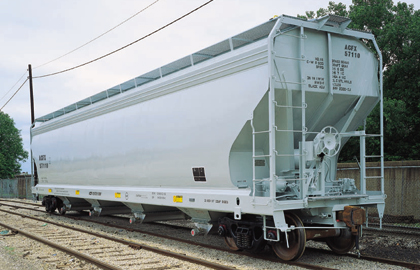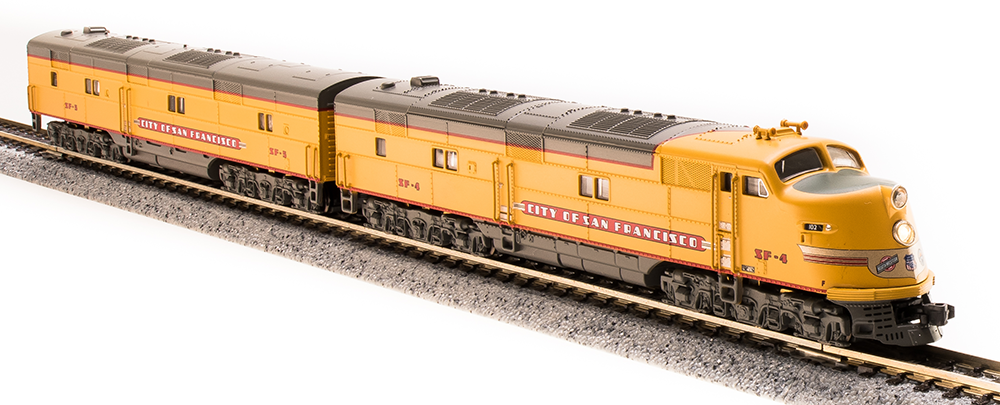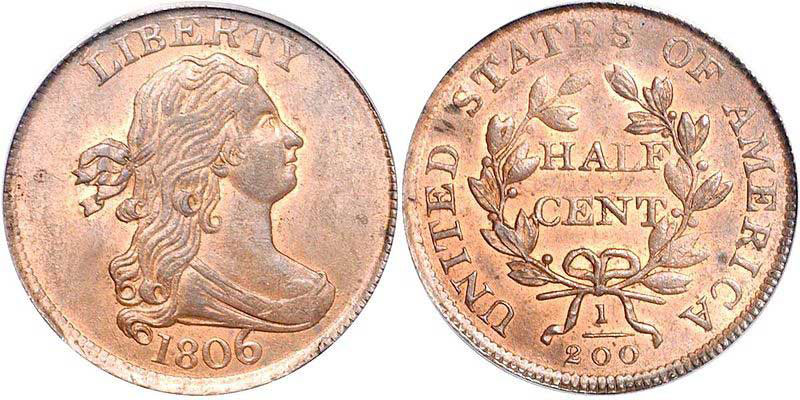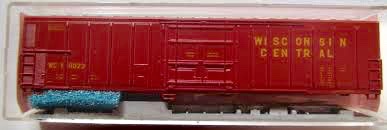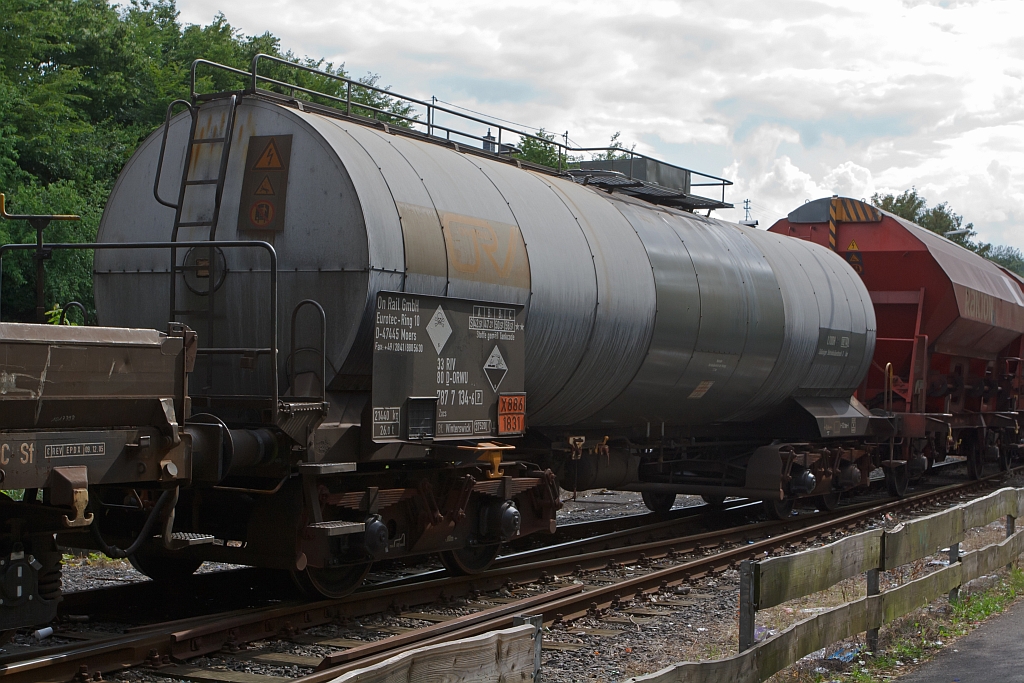Arnold Hornby - HN6227 - Tank Car, Single Dome, Zas - Nordwaggon - 33 80 795 7 347-7
| Stock Number | HN6227 |
| Original Retail Price | 29.90€ |
| Brand | Arnold Hornby |
| Manufacturer | Arnold Hornby |
| Body Style | Arnold Rapido Tank Car 4-axle Zas |
| Prototype Vehicle | Tank Car, Single Dome, Zas (Details) |
| Road or Company Name | Nordwaggon (Details) |
| Reporting Marks | DB |
| Road or Reporting Number | 33 80 795 7 347-7 |
| Paint Color(s) | Blue |
| Print Color(s) | Yellow |
| Coupler Type | Rapido Hook NEM Standard Pocket |
| Coupler Mount | Truck-Mount |
| Wheel Type | Chemically Blackened Metal |
| Wheel Profile | Small Flange (Low Profile) |
| Release Date | 2012-01-01 |
| Item Category | Rolling Stock (Freight) |
| Model Type | Tank Car |
| Model Subtype | Single Dome |
| Model Variety | Zas |
| Prototype Region | Europe |
| Prototype Era | EU Epoch V (1985 - 2000) |
| Scale | 1/160 |
Model Information:
Introduced in the middle of the 1980s and regularly re-run since then. Several variations of this body style exist, essentially different ladder styles: on the side, on one extremity, with or without platform around dome.
This body style is very close to the Arnold pressurized tank car introduced concurrently, the main visual difference being the absence of dome and of ladder.
This body style is very close to the Arnold pressurized tank car introduced concurrently, the main visual difference being the absence of dome and of ladder.
Prototype History:
Tank cars are a railroad staple. They have been around since the first half of the 20th century. These railcars carry a wide array of commodities, including liquid fertilizers, chemicals, fuel oils and asphalt, and food-grade oils. Tank cars can be pressurized or non-pressurized, insulated or non-insulated. Single dome cars carry only a single commodity at once. Food-service tank cars may be lined with stainless steel, glass, or plastic. Tank cars carrying dangerous goods are generally made of different types of steel, depending on the intended cargo and operating pressure. They may also be lined with rubber or coated with specialized coatings for tank protection or product purity purpose. The tank heads are also stronger to prevent ruptures during accidents.
UIC type: Zas
Z = Tank
a = 4 wheelsets
s = Permitted in trains up to 100 km/h
UIC type: Zas
Z = Tank
a = 4 wheelsets
s = Permitted in trains up to 100 km/h
Road Name History:
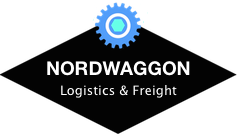 Nordwaggon was founded in 1984 by Electrolux and the SJ subsidiary forwarder ASG. The purpose was to procure freight wagons that better fit the needs of E-lux for white goods transports. Order 150 Laais wagons in two lots at the then VEB Waggonbau Niesky in the GDR. In 1990, ASG's stake in SJ was sold and the company's business facility changed. It also turned to the external customers, such as freight forwarders and industries, and at the same time the almost explosive new procurement of cars was initiated. North wagon called the modern railway, with new shiny freight cars with the big logo on the sides of the wagon. There was also an ambitious washing program where the cars were washed outside once a year. This has been abandoned in recent years, apparently to cut costs.Transwaggon also invested in many new cars, and also lets them wash. The irony of fate, possibly because the two owners of the North wagon, Electrolux and Swedcarrier , sold the company in the summer of 2006 to exactly Transwaggon. The sale has attracted much attention in the industry and not all customers have been satisfied. The competition authorities, however, did not object. It is also strange that Transwaggon got 300 million SEK in addition, as a thank you, so to speak. The whole NW staff in many countries have been terminated. Transwaggon now markets the former NW cars through its own organization. Successively the cars get new owner's inscription (74 p-TWA instead of 74 GC or even 74 SJ), as well as new contact information. However, it will certainly take a long time before the large NW log on the sides of the car is removed. An epoch is over, as well as an interesting part of Swedish railway history.
Nordwaggon was founded in 1984 by Electrolux and the SJ subsidiary forwarder ASG. The purpose was to procure freight wagons that better fit the needs of E-lux for white goods transports. Order 150 Laais wagons in two lots at the then VEB Waggonbau Niesky in the GDR. In 1990, ASG's stake in SJ was sold and the company's business facility changed. It also turned to the external customers, such as freight forwarders and industries, and at the same time the almost explosive new procurement of cars was initiated. North wagon called the modern railway, with new shiny freight cars with the big logo on the sides of the wagon. There was also an ambitious washing program where the cars were washed outside once a year. This has been abandoned in recent years, apparently to cut costs.Transwaggon also invested in many new cars, and also lets them wash. The irony of fate, possibly because the two owners of the North wagon, Electrolux and Swedcarrier , sold the company in the summer of 2006 to exactly Transwaggon. The sale has attracted much attention in the industry and not all customers have been satisfied. The competition authorities, however, did not object. It is also strange that Transwaggon got 300 million SEK in addition, as a thank you, so to speak. The whole NW staff in many countries have been terminated. Transwaggon now markets the former NW cars through its own organization. Successively the cars get new owner's inscription (74 p-TWA instead of 74 GC or even 74 SJ), as well as new contact information. However, it will certainly take a long time before the large NW log on the sides of the car is removed. An epoch is over, as well as an interesting part of Swedish railway history.

Brand/Importer Information:
Founded in 1906 by Karl Arnold in Nürnberg, K. Arnold & Co. began its life producing tin toys and related items. They produced an extensive line of model ships, doll house items and other toys. In 1935, K. Arnold & Co. hired Max Ernst as their managing director. Ernst, not to be confused with the German realist artist of the same name, was a significant factor in the future of Arnold.
On Max Ernst's 1976 retirement, Arnold employed perhaps 200 to 250 people, using three facilities in the Nuernberg area. The Company continued under family control until 1995, when Arnold went into bankruptcy and was sold to Rivarossi of Italy. Rivarossi, in turn, also went bankrupt, leading to the sale of all assets to Hornby of the United Kingdom. Production is carried out in China.
From Wikipedia
On Max Ernst's 1976 retirement, Arnold employed perhaps 200 to 250 people, using three facilities in the Nuernberg area. The Company continued under family control until 1995, when Arnold went into bankruptcy and was sold to Rivarossi of Italy. Rivarossi, in turn, also went bankrupt, leading to the sale of all assets to Hornby of the United Kingdom. Production is carried out in China.
From Wikipedia
Item created by: gdm
on 2019-10-13 16:40:18
Last edited by: Lethe on 2020-05-07 00:00:00
If you see errors or missing data in this entry, please feel free to log in and edit it. Anyone with a Gmail account can log in instantly.
Last edited by: Lethe on 2020-05-07 00:00:00
If you see errors or missing data in this entry, please feel free to log in and edit it. Anyone with a Gmail account can log in instantly.


